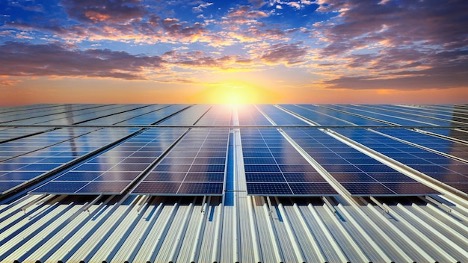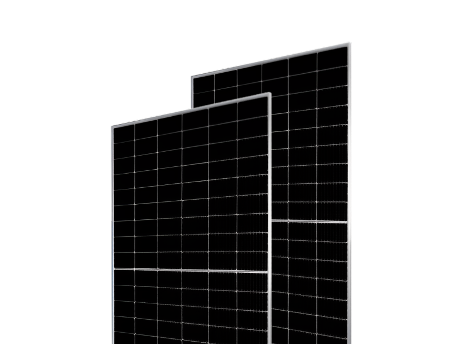In the 21st century, solar energy stands out as one of the most green and sustainable power sources, crucial for accelerating urban green development. With the global move towards reducing every carbon footprint, cities are increasingly turning to renewable energy solutions. Among these, the PV solar module plays a pivotal role in harnessing and converting solar energy into usable power, which is essential in this transformation, serving as the medium to collect sunlight and convert it into electricity. Their implementation in urban settings not only lower dependence on conventional energy resources but also supports the creation of eco-friendly infrastructures.
As we explore the role of PV solar modules in urban green development, it's vital to understand their current status and future trends. So, this article delves into the present utilization of PV solar modules in various regions, including the United States, the EU, and China. Additionally, it will highlight future trends that could further enhance urban green development.

(Copyright Photo from: https://www.freepik.com/search?format=search&img=1&last_filter=img&last_value=1&query=solar+panel+in+urban)
Current Status of PV Solar Modules in Urban Green Development
In the United States
The United States has made significant strides in incorporating PV solar modules into urban green development. Major cities like San Francisco, New York, and Los Angeles have adopted solar energy as a critical component of their sustainability plans. As of 2023, the United States had deployed 32.4 gigawatts (GW) of installed solar capacity, which was the first time the solar energy industry surpassed the 30 GW of solar generation installation[1]. It is a substantial portion contributing to urban areas towards green development.
In the EU
The European Union (EU) is always at the forefront of green energy initiatives. Estimatedly, in 2023, the EU witnessed a record-breaking 56 GW of solar installations, marking the third consecutive year of annual growth rates of at least 40%[2]. Germany, the pioneer in solar energy, has installed over 14.1 GW of solar capacity in 2023, significantly contributing to urban green development[2]. By utilizing solar power, cities can decrease their carbon footprint and contribute to mitigating the aftermath of climate change, making cities operations into a green and sustainable way.
In China
China, one of the world's largest producers and installers of PV solar modules, has been rapidly advancing its urban green development efforts. China has installed over 390 GW of solar capacity[3]. This significant increase in solar capacity demonstrates China's dedication to expanding renewable energy sources and reducing reliance on fossil fuels. Plus, China has created a supportive policy environment for solar energy development. It has implemented policies such as special financing solutions for PV, dynamic market mechanisms [4], and more measures to incentivize solar PV installations.
These examples from the United States, the EU, and China illustrate the growing reliance on PV solar modules to drive urban green development. The data underscores the significant impact of PV solar panels in reducing carbon emissions, promoting energy efficiency, and supporting sustainable urban growth. As we move forward, it’s crucial to explore the future trends that will shape the next phase of this green revolution.
Future Trends in PV Solar Modules for Urban Green Development
Virtual Power Plants
One of the most promising future trends in urban green development is the rise of Virtual Power Plants (VPPs). Empowered by artificial intelligence, VPPs aggregate numerous small-scale, decentralized energy resources, including residential and C&I PV solar systems, to create a reliable and efficient power supply network.
As a result, compared with the current mainstream power supply solution, VPPs could be the future for optimizing energy production and distribution, enhancing grid stability, and reducing reliance on traditional power plants. This trend is set to revolutionize how cities manage and utilize renewable energy, making urban environments more resilient and sustainable.
Building-Integrated Photovoltaics (BIPV)
Building-Integrated Photovoltaics (BIPV) represents another significant trend poised to transform urban landscapes. Traditional PV systems often require additional structures for mounting and significant space allocation, which can be challenging in densely populated urban areas. On the contrary, BIPV is a solution that integrates PV solar modules directly into building materials such as windows, facades, and roofs. This innovative approach not only generates clean energy but also improves the aesthetic and functional aspects of buildings.
As urban areas continue to grow, BIPV systems offer a seamless way to incorporate renewable energy solutions into the very fabric of urban architecture, promoting energy efficiency and sustainability.
Wide Applications of Innovation in PV Panels
Innovation means the future. The future of PV solar modules also lies in the continuous innovation of PV technologies. Like PERC (Passivated Emitter and Rear Cell) and TOPCon (Tunnel Oxide Passivated Contact) modules, these PV solar module technologies are pushing the boundaries of efficiency and performance. They could allow for greater energy output from the same amount of sunlight, making them ideal for urban settings where space can be limited. The development of new materials, such as P-type silicon wafers, further enhances the durability and effectiveness of PV solar modules. These technological advancements are vital for meeting the increasing energy demands of urban green development.
As cities around the world strive to become more sustainable, these future trends in PV solar modules will play a vital role in shaping urban green development. By leveraging Virtual Power Plants, BIPV systems, and cutting-edge PV technologies, urban areas can significantly reduce their carbon footprint and foster a cleaner, greener future.
Elite Solar’s PV Solar Module: The 182-54 Type
To further accelerate urban green development, it is essential to adopt high-quality and efficient PV solar modules. Our Elite Solar’s 182-54 Type PV solar module stands out as a prime example of cutting-edge solar technology designed to meet the needs of modern urban environments. Here’s why:

1. High Power Generation
Our 182-54 Type solar panels utilize bifacial technology, enabling additional energy harvesting from the rear side, which can increase energy output by up to 25%. This feature is beneficial for urban settings, in particular, where maximizing energy production from limited space is crucial.
2. High Efficiency
Our PV solar modules boast a higher module conversion efficiency than the innovative half-cut cell structure. This design minimizes energy loss and enhances overall efficiency, ensuring that your urban development project harnesses the maximum amount of solar energy available.
3. Severe Weather Resilience
Elite Solar's 182-54 Type panels are engineered to withstand extreme weather conditions. Certified to endure wind loads of 2400 Pascal and snow loads of 5400 Pascal, these panels provide reliable performance and durability, making them suitable for a variety of urban climates and allowing them to enjoy more solar energy.
4. Excellent Anti-PID Performance
Anti-Potential Induced Degradation (Anti-PID) is a technology or treatment applied to PV solar modules to prevent the degradation of their performance caused by high voltage stress over time. It is important because it helps maintain their efficiency and longevity, ensuring consistent energy output and reducing maintenance costs. Our Elite Solar’s 182-54 Type is equipped with excellent Anti-PID performance, which is suitable to be applied in urban green development projects to resist the high-capacity operation, delivering a stable and sustainable solar energy conversion.
Conclusion
In the 21st century, PV solar modules are pivotal in driving urban green development and will become the backbone to push urban sustainability forward in the future. Harnessing solar energy is a significant stride toward sustainability around the world—from the United States to the EU and China. Looking ahead, future trends such as VPPs, BIPV, and advancements in PV technologies like PERC and more are set to further revolutionize urban landscapes.
And our Elite Solar’s 182-54 Type PV solar module exemplifies the advanced technology necessary to propel urban green development forward. With features like bifacial technology, low resistance, excellent Anti-PID performance, and more, our module stands out as a robust and reliable choice for diverse urban applications.
We, Elite Solar, are one of the leading and trusted PV panel manufacturers in the solar energy industry. We commit to making cities get better with our high-quality, innovative PV solar module solutions. If interested, please visit our official website to learn more and contact us!
Reference
[1] Available at: https://www.utilitydive.com/news/solar-installation-capacity-manufacturing-modules/709414/
[2] Available at: https://www.solarpowereurope.org/press-releases/new-report-eu-solar-reaches-record-heights-of-56-gw-in-2023-but-warns-of-clouds-on-the-horizon
[3] Available at: https://www.statista.com/topics/11028/solar-energy-in-china/#topicOverview
[4] Available at: https://e360.yale.edu/features/china-renewable-energy

